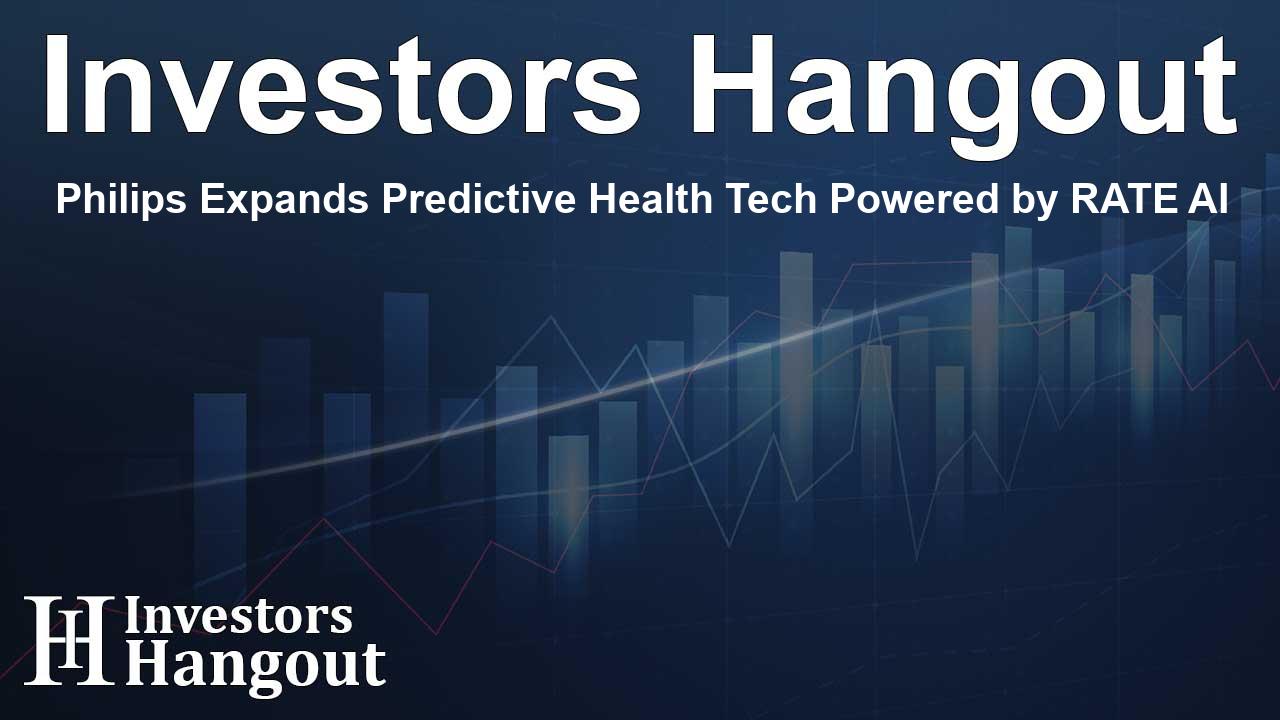Philips Expands Predictive Health Tech Powered by RATE AI

Philips Enhances Health Monitoring for Military Personnel
Royal Philips (NYSE: PHG) is taking significant steps to advance the health and readiness of active-duty service members through its innovative Rate Analysis of Threat Exposure (RATE) system. With a substantial investment from the Joint Program Executive Office for Chemical, Biological, Radiological and Nuclear Defense (JPEO-CBRND), totaling $25 million over four years, this project is aimed at improving health monitoring systems within military settings.
The RATE Algorithm: A Revolutionary Tool
RATE is a state-of-the-art algorithm designed to detect infections in their early stages. By focusing on pre-symptomatic indicators of infection, the system plays a critical role in keeping military personnel healthy and ready for action. It has extensive applications in various healthcare settings, making it an invaluable tool for maintaining operational efficiency.
Why Early Detection Matters
The primary goal of the RATE system is to reduce infection-related downtime among military personnel. This proactive approach allows service members to receive timely medical attention and take appropriate protective measures if they are exposed to infectious agents. According to Lorenzo Hankla, the JPEO Wearables Program Officer, utilizing off-the-shelf wearable technology allows for continuous health monitoring without being intrusive.
Leveraging Advanced Technology for Military Health
The original RATE algorithm was first developed in 2019, employing extensive data science and machine learning techniques. By analyzing a wealth of data from Philips concerning thousands of hospital-acquired infections, the system creates a risk score for detecting various types of infections. These findings have broad applicability, notably in recognizing common respiratory issues like pneumonia.
Innovations Inspired by the Pandemic
In response to the COVID-19 pandemic, the algorithm's wearable integration has gained traction. A recent study focusing on 9,381 Department of Defense personnel showcased how the algorithm effectively detected symptoms of COVID-19 up to six days before they typically manifested. This capacity for early detection is crucial in optimizing military readiness and safeguarding the health of personnel during critical times.
Philips Commitment to Military Health
As Jeff DiLullo, Chief Region Leader of Philips North America and veteran, emphasizes, protecting the health and wellness of active military members is paramount. The flexibility of AI-powered innovations like RATE allows the military to address the unique health needs of its personnel, ensuring they receive appropriate and timely interventions and ultimately enhancing their readiness to serve.
About Royal Philips
Royal Philips, renowned for its pioneering efforts in health technology, aims to significantly improve the health outcomes and well-being of individuals through meaningful innovation. The company integrates advanced technologies with deep consumer and clinical insights to deliver comprehensive health solutions for both individual consumers and healthcare providers.
Philips operates from its headquarters in the Netherlands, leading in fields such as diagnostic imaging and patient monitoring. In recent years, the company reported impressive revenues, amounting to EUR 18.2 billion, while employing over 69,300 individuals across more than 100 countries, showcasing its global reach and impact.
About JPEO-CBRND
The Joint Program Executive Office for Chemical, Biological, Radiological, and Nuclear Defense (JPEO-CBRND) is tasked with integral defense capabilities to protect service members. Their mission is to ensure that they can operate effectively and safely in varied environments, laying emphasis on the importance of preparedness against potential threats.
Frequently Asked Questions
What is the RATE algorithm?
The RATE algorithm is a predictive tool designed to detect pre-symptomatic infections in military personnel, enhancing their health and operational readiness.
How much is the investment in RATE by JPEO-CBRND?
The JPEO-CBRND has committed $25 million over a four-year period to accelerate the development and deployment of the RATE system.
How does RATE technology help military personnel?
RATE technology allows for early detection of infections, which helps in reducing downtime and ensuring timely medical intervention for service members.
What role does wearable technology play in the RATE system?
Wearable technology enables continuous health monitoring, providing real-time data that helps military personnel take proactive measures if infection scores rise.
Who is behind the development of the RATE technology?
Royal Philips is the company behind the development of the RATE technology, emphasizing its commitment to advancing health tech solutions for military applications.
About Investors Hangout
Investors Hangout is a leading online stock forum for financial discussion and learning, offering a wide range of free tools and resources. It draws in traders of all levels, who exchange market knowledge, investigate trading tactics, and keep an eye on industry developments in real time. Featuring financial articles, stock message boards, quotes, charts, company profiles, and live news updates. Through cooperative learning and a wealth of informational resources, it helps users from novices creating their first portfolios to experts honing their techniques. Join Investors Hangout today: https://investorshangout.com/
Disclaimer: The content of this article is solely for general informational purposes only; it does not represent legal, financial, or investment advice. Investors Hangout does not offer financial advice; the author is not a licensed financial advisor. Consult a qualified advisor before making any financial or investment decisions based on this article. The author's interpretation of publicly available data shapes the opinions presented here; as a result, they should not be taken as advice to purchase, sell, or hold any securities mentioned or any other investments. The author does not guarantee the accuracy, completeness, or timeliness of any material, providing it "as is." Information and market conditions may change; past performance is not indicative of future outcomes. If any of the material offered here is inaccurate, please contact us for corrections.